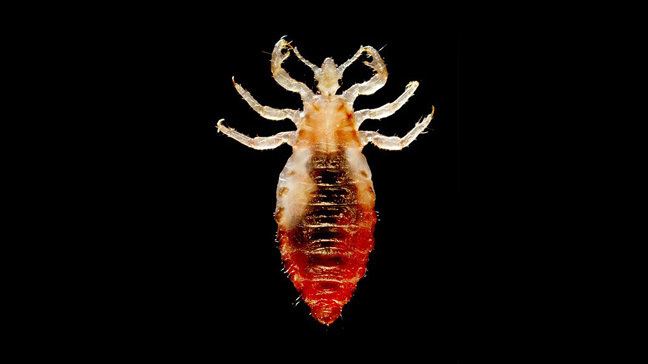Family Pediculidae Scientific name Pediculus humanus humanus Order Louse | Suborder Anoplura Genus Pediculus Higher classification Pediculus humanus Rank Subspecies | |
 | ||
Similar Louse, Pediculus humanus, Crab louse, Sucking louse, Insect | ||
Body louse meaning
The body louse (Pediculus humanus humanus, sometimes called Pediculus humanus corporis) is a louse that infests humans. The condition of being infested with head lice, body lice, or pubic lice is known as pediculosis. The body louse genome sequence analysis was published in 2010.
Contents
Life cycle and morphology
Pediculus humanus humanus (the body louse) is indistinguishable in appearance from Pediculus humanus capitis (the head louse) but will interbreed only under laboratory conditions. In their natural state, they occupy different habitats and do not usually meet. In particular, body lice have evolved to attach their eggs to clothes, whereas head lice attach their eggs to the base of hairs.
The life cycle of the body louse consists of three stages: egg (also called a nit), nymph, and adult.
- Nits are louse eggs. They are generally easy to see in the seams of an infested person's clothing, particularly around the waistline, under armpits or even in body hair. They are oval and usually yellow to white in color. Body lice nits may take 1–2 weeks to hatch.
- A nymph is an immature louse that hatches from the nit (egg). A nymph looks like an adult body louse, but is smaller. Nymphs mature into adults about 9–12 days after hatching. To live, it must feed on blood.
- The adult body louse is about the size of a sesame seed (2.5–3.5 mm), has six legs, and is tan to greyish-white. Females lay eggs. To live, lice must feed on blood. If separated from their hosts, lice die.
Origins
The body louse diverged from the head louse at around 100,000 years ago, hinting at the time of the origin of clothing. Body lice were first described by Carl Linnaeus in the 10th edition of Systema Naturae. The human body louse had its genome sequenced in 2010, and at that time it had the smallest known insect genome.
